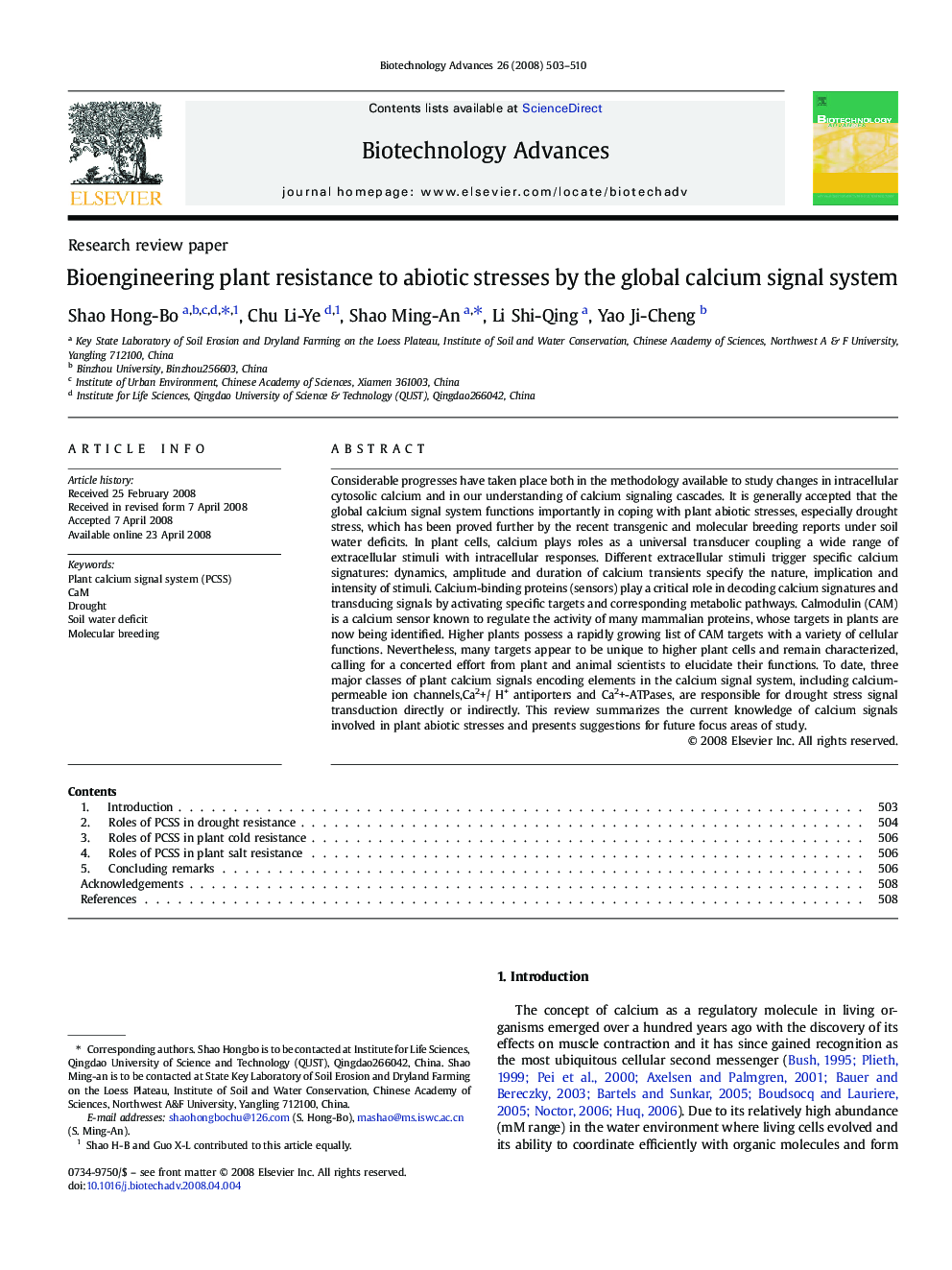| Article ID | Journal | Published Year | Pages | File Type |
|---|---|---|---|---|
| 14484 | Biotechnology Advances | 2008 | 8 Pages |
Considerable progresses have taken place both in the methodology available to study changes in intracellular cytosolic calcium and in our understanding of calcium signaling cascades. It is generally accepted that the global calcium signal system functions importantly in coping with plant abiotic stresses, especially drought stress, which has been proved further by the recent transgenic and molecular breeding reports under soil water deficits. In plant cells, calcium plays roles as a universal transducer coupling a wide range of extracellular stimuli with intracellular responses. Different extracellular stimuli trigger specific calcium signatures: dynamics, amplitude and duration of calcium transients specify the nature, implication and intensity of stimuli. Calcium-binding proteins (sensors) play a critical role in decoding calcium signatures and transducing signals by activating specific targets and corresponding metabolic pathways. Calmodulin (CAM) is a calcium sensor known to regulate the activity of many mammalian proteins, whose targets in plants are now being identified. Higher plants possess a rapidly growing list of CAM targets with a variety of cellular functions. Nevertheless, many targets appear to be unique to higher plant cells and remain characterized, calling for a concerted effort from plant and animal scientists to elucidate their functions. To date, three major classes of plant calcium signals encoding elements in the calcium signal system, including calcium-permeable ion channels,Ca2+/ H+ antiporters and Ca2+-ATPases, are responsible for drought stress signal transduction directly or indirectly. This review summarizes the current knowledge of calcium signals involved in plant abiotic stresses and presents suggestions for future focus areas of study.
